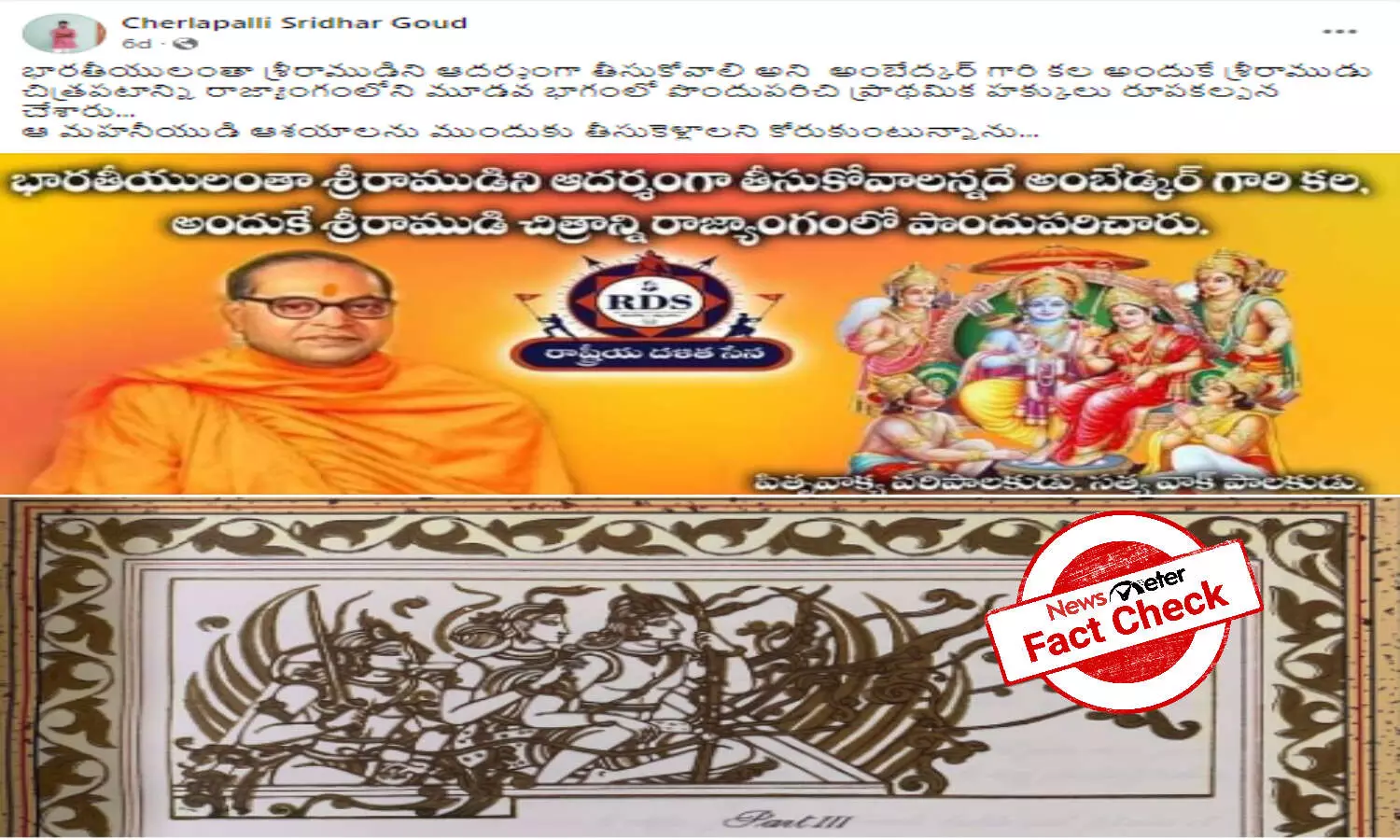Hyderabad: Social media users claim that Ambedkar embodied the image of Lord Ram in Part III of the Constitution, Users say that the intention was that all Indians should consider Lord Ram as an ideal.
Fact Check:
NewsMeter found the claim to be false.
The final draft of the Constitution submitted by Ambedkar to the House was discussed and approved by the House. However, there are no artifacts in this draft submitted by Ambedkar. This is just a draft.
However, after the final draft was approved, the House was of the view that the original copy of the Constitution of India should have artifacts that would make the cultural/artistic heritage of India known. The House unanimously decided to discuss the matter and hand over the responsibility to renowned artist Nandalal Bose.
https://www.google.com/amp/s/theprint.in/opinion/why-painting-of-ram-in-indian-constitution-matters/592160/%3famp
Thus, Nandalal Bose and his team embodied various artifacts/chapters in the Constitution, such as mythological and epic characters, rulers, freedom fighters, etc., to reflect the original manuscript of the Indian Constitution on Indian history. It was against this background that he set up the artifacts of Lord Ram, Lakshman, and Sita in the third part which embodied the fundamental rights of the Constitution.
https://en.m.wikisource.org/wiki/The_Constitution_of_India_(Original_Calligraphed_and_Illuminated_Version)/Part_3
Not only that, he decorated each section with what belongs to each period in history to reflect the Indian epics, culture, and history. Guptas era, Ashoka, Buddha, Mahavira, Mahabharata, Ramayana, Akbar, Tipu Sultan and many more are included.
A complete list can be viewed here. This is the reason why the image of Ram remains in the constitution. This original copy can be downloaded from here.
https://www.loc.gov/item/57026883
There is no information that Ambedkar believed that all Indians should take Lord Ram as an ideal. Ambedkar made serious remarks on Lord Rama, Lord Krishna, Ramayana, Mahabharata, etc. Ambedkar expressed these views in his book "Riddles in Hinduism."
Hence, the claim is false.
